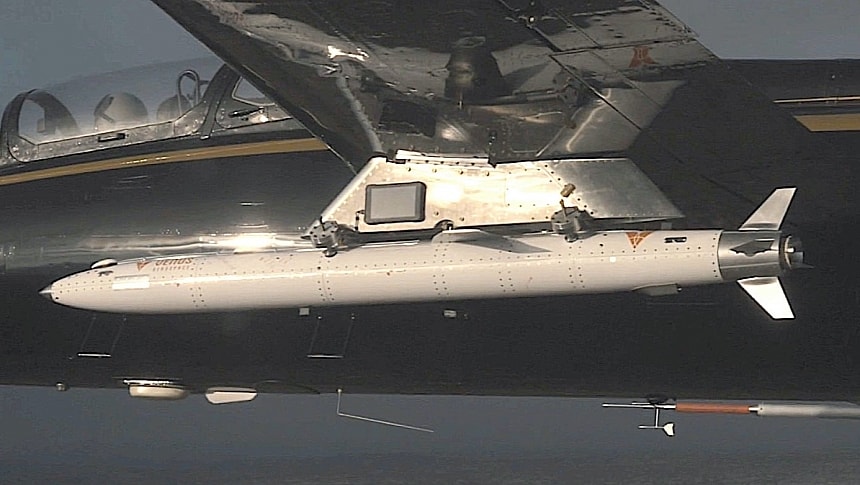The rotating detonation rocket engine (RDRE) is the new Holy Grail of the aerospace industry. The way such a technology works promises unprecedented speeds for aircraft and spacecraft, prompting several companies and organizations to give the idea a much closer look.
One of the crews working toward the development of an RDRE is called Venus Aerospace. Established in Houston, Texas, just four short years ago, the company's ultimate goal is the creation of a hypersonic spaceplane that can reach breathtaking speeds of Mach 9, or 6,900 mph (11,100 kph).
The spaceplane is called Stargazer and it will be able to carry up to 12 passengers to virtually any destination on Earth in under an hour, no matter the departure point.
Stargazer will employ conventional jet engines to fly away from populated areas. Once in the clear, a rotating detonation rocket engine should kick into gear at push it to hypersonic speeds and an altitude of 32 miles (51 km).
The RDRE that will be responsible for this is still in development stages. Last time we heard anything about it was earlier in March, when Venus informed us of the hardware undergoing a long-duration test fire for the first time, under the guidance of DARPA.
And this week comes another bit of info about it, telling us of milestone that took place about a month ago, in an undisclosed location. Back in February, it seems, a Venus supersonic flight test winged drone completed its inaugural flight, marking the first major step toward a full-blown test of the RDRE.
The drone was relatively small, measuring just eight feet (2.4 meters) and weighing 300 pounds (136 kg), and it looks more like a fighter jet-launched missile. An undisclosed carrier aircraft (by the looks of it an Aero L-29 Delfín) took the thing to an altitude of 12,000 feet (3,657 meters), from where it was dropped and the rocket's engine sprung into action.
The uncrewed aircraft was powered by a hydrogen peroxide monopropellant engine that ran at just 80 percent of its achievable thrust. That was a requirement of the flight, as the Venus team did not want the drone to go over the speed of sound for the purposes of this test.
The drone did exactly what it was supposed to do, reaching a top speed of Mach 0.9 (690 mph/1,111 kph) and flying for a distance of ten miles (16 km). We are not told what happened to the drone once the flight was over.
The test aimed to put through their paces a series of systems, including flight controls and telemetry. The drone's stability, ground operations, and air launch were also under scrutiny. As far as the RDRE is concerned, Venus only says one leg of the system was tested, but does not provide details as to what exactly that means.
The company says this way of doing things is how it can "cheaply and quickly get to the minimum viable test of our RDRE as a hypersonic engine." The success of the flight opens the doors for the first full RDRE flight, and from that there's only one step to a full hypersonic flight.
To be fair, though, we are given no timetable for when the engine, let alone the Stargazer, could be completed.
The spaceplane is called Stargazer and it will be able to carry up to 12 passengers to virtually any destination on Earth in under an hour, no matter the departure point.
Stargazer will employ conventional jet engines to fly away from populated areas. Once in the clear, a rotating detonation rocket engine should kick into gear at push it to hypersonic speeds and an altitude of 32 miles (51 km).
The RDRE that will be responsible for this is still in development stages. Last time we heard anything about it was earlier in March, when Venus informed us of the hardware undergoing a long-duration test fire for the first time, under the guidance of DARPA.
And this week comes another bit of info about it, telling us of milestone that took place about a month ago, in an undisclosed location. Back in February, it seems, a Venus supersonic flight test winged drone completed its inaugural flight, marking the first major step toward a full-blown test of the RDRE.
The drone was relatively small, measuring just eight feet (2.4 meters) and weighing 300 pounds (136 kg), and it looks more like a fighter jet-launched missile. An undisclosed carrier aircraft (by the looks of it an Aero L-29 Delfín) took the thing to an altitude of 12,000 feet (3,657 meters), from where it was dropped and the rocket's engine sprung into action.
The uncrewed aircraft was powered by a hydrogen peroxide monopropellant engine that ran at just 80 percent of its achievable thrust. That was a requirement of the flight, as the Venus team did not want the drone to go over the speed of sound for the purposes of this test.
The drone did exactly what it was supposed to do, reaching a top speed of Mach 0.9 (690 mph/1,111 kph) and flying for a distance of ten miles (16 km). We are not told what happened to the drone once the flight was over.
The test aimed to put through their paces a series of systems, including flight controls and telemetry. The drone's stability, ground operations, and air launch were also under scrutiny. As far as the RDRE is concerned, Venus only says one leg of the system was tested, but does not provide details as to what exactly that means.
The company says this way of doing things is how it can "cheaply and quickly get to the minimum viable test of our RDRE as a hypersonic engine." The success of the flight opens the doors for the first full RDRE flight, and from that there's only one step to a full hypersonic flight.
To be fair, though, we are given no timetable for when the engine, let alone the Stargazer, could be completed.












